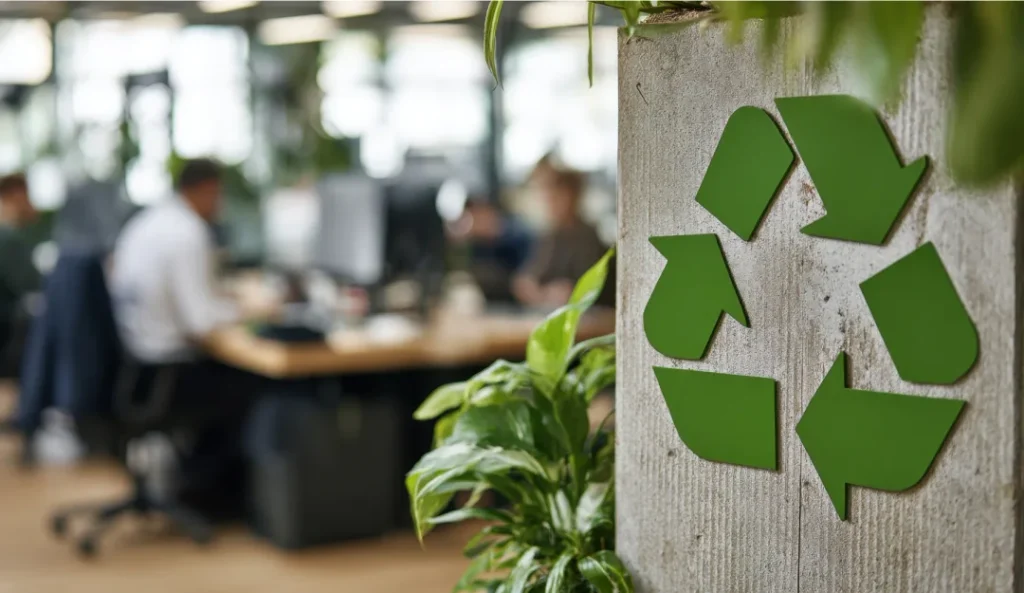As businesses and communities shift toward environmentally conscious practices, the demand for sustainable signs has grown rapidly. Sustainable signage combines effective visual communication with eco-friendly materials, responsible production processes, and long-lasting durability. Whether used for retail, corporate spaces, events, schools, restaurants, or public environments, sustainable signs help organizations reduce waste, lower their carbon footprint, and reflect values that modern customers care deeply about. But the quality, performance, and true sustainability of these signs rely entirely on the knowledge, craftsmanship, and responsible decision-making of a professional sign maker.
Sustainable signs are designed with environmentally friendly materials and processes, including recycled aluminum, biodegradable substrates, FSC-certified wood, water-based inks, low-VOC coatings, LED illumination, and durable materials intended for long-term use. They can take many forms—indoor signs, outdoor signs, wayfinding systems, wall graphics, menu boards, directional signs, ADA signage, branded displays, and even large-format banners made from recyclable or PVC-free materials.

What makes sustainable signs so valuable is their ability to support branding while supporting the planet. Today’s consumers increasingly prefer businesses that demonstrate environmental responsibility. A sustainable sign reflects a commitment to smarter resource use, ethical branding, and environmentally friendly operations—qualities that elevate customer trust and brand reputation.
However, creating truly sustainable signage requires much more than simply choosing “green” materials. The process depends heavily on the expertise of a skilled sign maker who understands how to design, source, and fabricate signs that remain both eco-friendly and high-performing.
Providence sign maker begins with material selection. Not all substrates labeled “eco-friendly” offer the same durability or sustainability benefits. A knowledgeable sign maker evaluates factors such as recyclability, biodegradability, lifespan, weight, and environmental impact. They may recommend recycled aluminum, bamboo, FSC-certified wood, eco-friendly composite board, or PVC-free banner material, depending on the sign’s purpose and environment. Choosing the wrong material can lead to premature wear—resulting in more waste and higher replacement costs.
Ink and printing methods also play a major role. A skilled sign maker uses water-based or latex inks, which emit fewer chemicals and produce vibrant, long-lasting color without harming the environment. They avoid harsh solvents, reduce energy consumption through efficient printing technology, and follow eco-conscious production workflows.
Design strategy matters too. By designing signs that are modular, re-printable, or easy to update—such as using interchangeable panels—a sign maker reduces long-term material waste. They also create designs that maximize lifespan, preventing the need for frequent replacements.
Durability is a crucial part of sustainability. A professional ensures that even eco-friendly signs withstand weather, sunlight, foot traffic, or indoor wear. Using high-quality finishes, protective coatings, and proper mounting techniques, a skilled sign maker helps extend the sign’s usable life, minimizing environmental impact.
Energy-efficient lighting is another sustainable option. For illuminated signs, professionals choose LED systems, which consume far less energy, last significantly longer, and produce minimal heat compared to older lighting technologies.
Responsibility doesn’t stop at fabrication. A sign maker also provides guidance on end-of-life options, including recycling programs, panel replacement, and material disposal—ensuring signs remain eco-friendly from beginning to end.
Beyond the technical aspects, a sign maker understands how sustainable signage strengthens a brand’s identity. When customers see eco-friendly materials or displays marked as sustainable, it communicates authenticity, purpose, and care. This can influence purchasing decisions, improve customer loyalty, and help businesses align with modern environmental expectations.
In short, sustainable signs offer a powerful combination of environmental responsibility, cost efficiency, and branding impact. But their success depends entirely on the craftsmanship and eco-conscious expertise of the sign maker who selects the materials, designs the structure, and creates the final product. A sustainably crafted sign doesn’t just communicate—it inspires.
Because when your brand stands for something meaningful, your sign should too. For more information you can contact Providence Reliable Sign Maker!